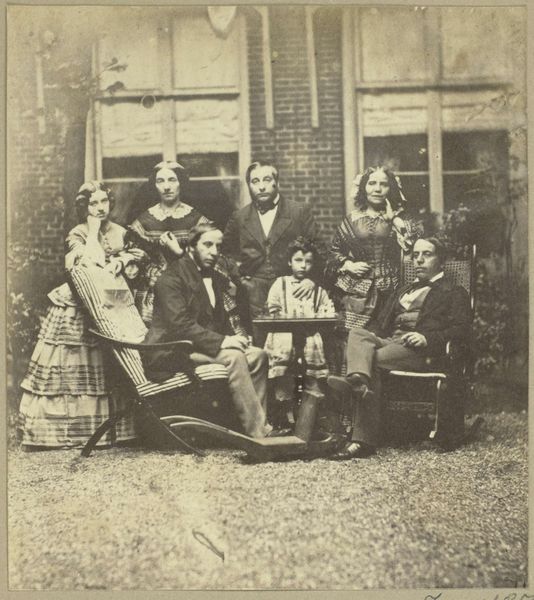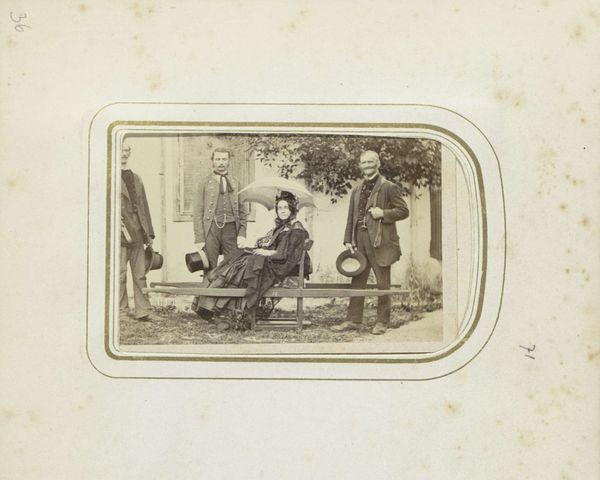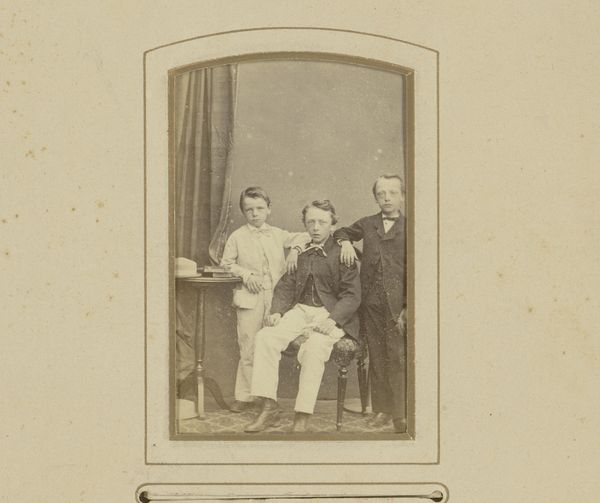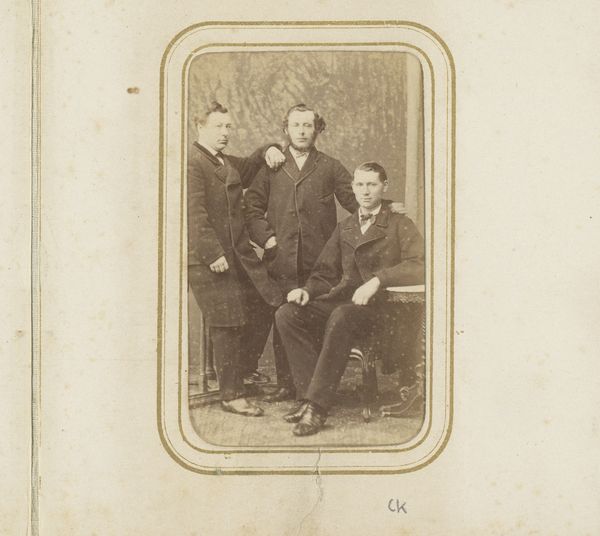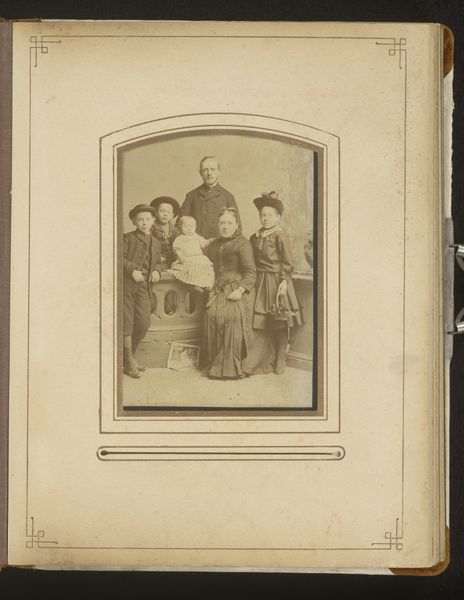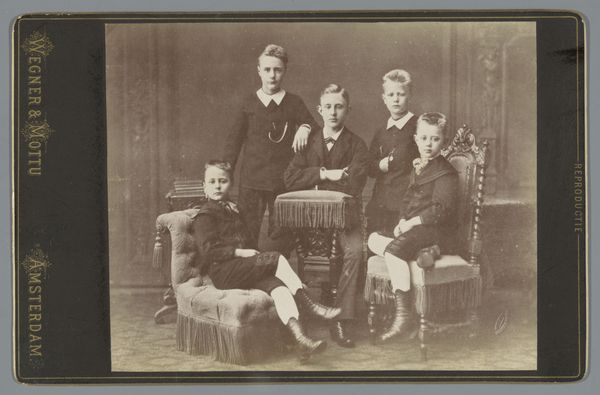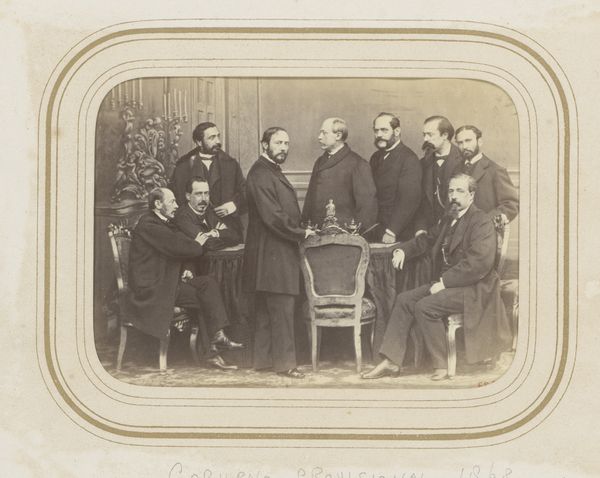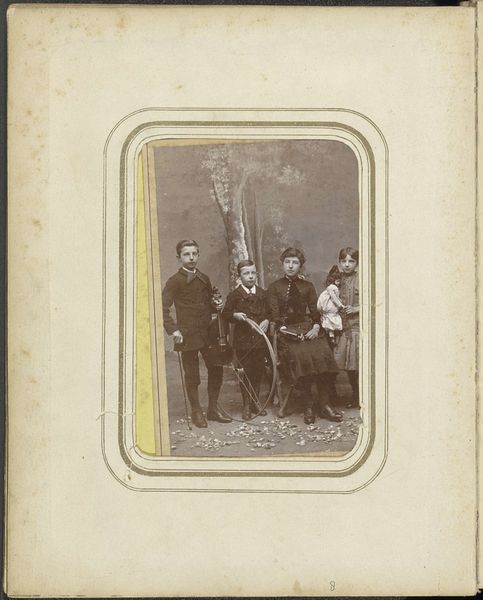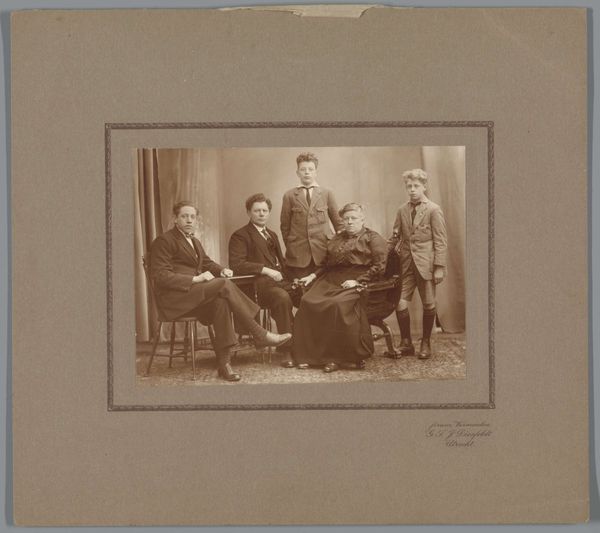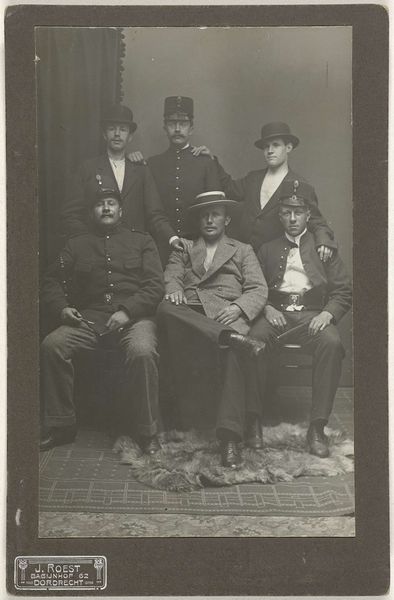
photography
#
portrait
#
photography
#
genre-painting
#
modernism
#
realism
Dimensions: height 95 mm, width 65 mm
Copyright: Rijks Museum: Open Domain
Editor: So, this is an early 20th-century photograph, “Portret van het gezin van JMK Pennink,” circa 1910 to 1920. It’s a pretty standard family portrait, but something about their serious expressions makes me curious. What do you see in this image? Curator: Well, at first glance, it's tempting to view this as a straightforward record of a family. But beneath that surface, photographs like this are vessels carrying complex social and psychological information. Consider the composition: the patriarch centered, the mother slightly behind—how do these spatial relationships speak to familial power dynamics of the time? Editor: That's interesting. I hadn’t considered the positioning so consciously. It just seemed like a typical staging. Curator: And what about the attire? Notice the uniformed child, juxtaposed with the others in civilian dress. What narratives does that spark? Is it simply about societal roles, or something deeper—perhaps a hope for the future, projected onto the young one? Or think about cultural memory here. What visual elements speak specifically to Dutch identity in that period? Editor: I see what you mean. The photograph becomes less about a specific family and more about a snapshot of broader social values. What about the framing? Does that mean anything? Curator: The ornate framing, while common, creates a sense of preciousness, reinforcing the idea of family as a core social unit worthy of preservation. The image within the frame becomes an icon of sorts. What do you make of the backdrop of the house itself? How does it root the image to a specific place and class? Editor: It’s like each element contributes to a larger story. It’s making me rethink how I view these kinds of "simple" family photos. Curator: Exactly! We must remember photographs capture not just likeness but aspirations, anxieties, and the silent language of societal norms. Considering the symbolism helps us decipher a culture’s visual language. Editor: I'll definitely look at family photos differently from now on. It’s more than just documenting faces. Curator: Precisely. Each one offers a layered narrative, if we take the time to look.
Comments
No comments
Be the first to comment and join the conversation on the ultimate creative platform.
